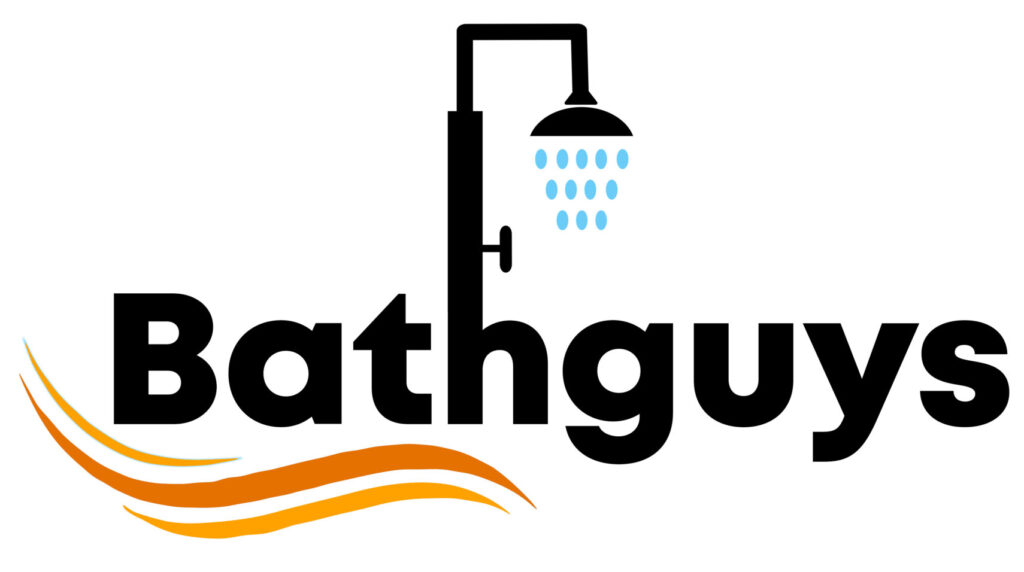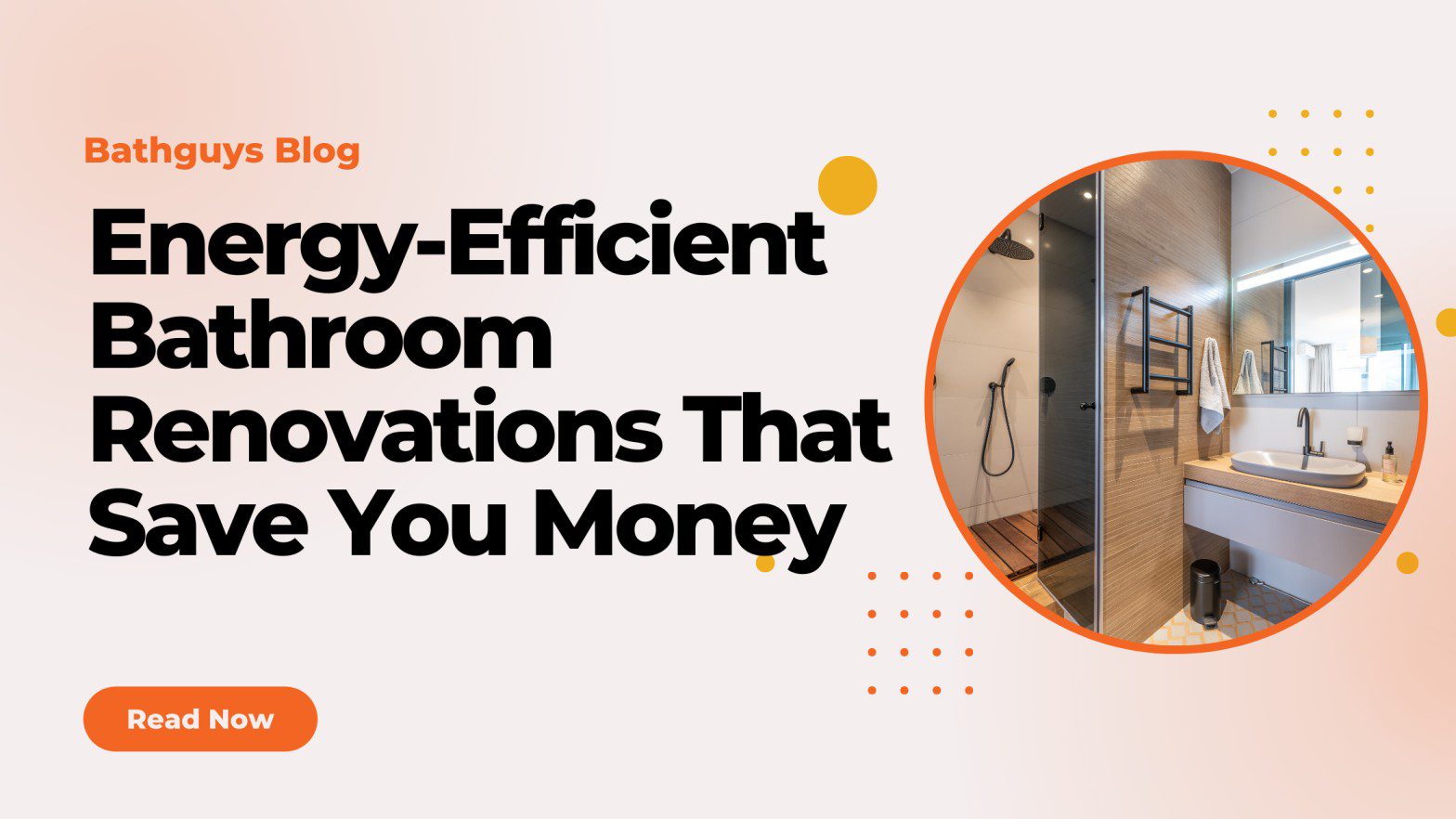Energy-efficient bathroom renovations are becoming a top priority for homeowners in Toronto who want to save money and reduce their environmental impact. With rising utility costs and growing awareness of sustainable living, updating your bathroom with energy-saving fixtures and smart designs can make a big difference in both comfort and savings.
In this blog, we’ll explore practical strategies for energy-efficient bathroom renovations that save you money without compromising style or functionality. From low-flow faucets and LED lighting to smart heating systems and eco-friendly materials, these tips will help you transform your bathroom into a modern, cost-effective space. Whether you’re planning a full remodel or a small upgrade, this guide will show you how to make your bathroom both beautiful and energy-efficient.
Assessing Your Current Bathroom’s Energy Efficiency
Before diving into energy-efficient bathroom renovations, it’s essential to understand where your current bathroom stands in terms of energy use. A thorough assessment helps identify areas that waste water or electricity, guiding you toward upgrades that will truly save money and improve sustainability. Here’s how to evaluate your bathroom’s energy efficiency step by step.

Step 1: Examine Water Fixtures and Usage
Water use accounts for a significant portion of energy consumption in bathrooms. Start by checking:
- Toilets: Older toilets can use up to 13 liters per flush, whereas modern low-flow models use 4–6 liters.
- Showerheads and Faucets: Traditional fixtures can waste a lot of water. Measure flow rates—anything above 2.5 gallons per minute is inefficient.
- Leaks: Even small drips increase water bills and energy used to heat water. Inspect all faucets, valves, and connections.
Step 2: Evaluate Lighting
Lighting is another area where efficiency can be improved:
- Type of Bulbs: Check if your bathroom still uses incandescent bulbs. Replacing them with LED lights can reduce electricity use by up to 80%.
- Placement and Usage: Assess whether lights are left on unnecessarily or if motion sensors could help reduce energy waste.
Step 3: Check Heating Systems
Heating water and the bathroom itself can account for a large portion of energy bills:
- Water Heater: Identify the age and efficiency of your current water heater. Tankless or high-efficiency water heaters consume less energy than older storage tanks.
- Heating Elements: If you have radiant floor heating or towel warmers, ensure they are functioning efficiently and consider programmable timers.
Step 4: Inspect Insulation and Ventilation
Proper insulation and ventilation prevent heat loss and improve comfort:
- Windows and Walls: Poorly insulated windows or walls lead to heat loss, increasing energy costs. Consider double-pane windows or additional wall insulation.
- Exhaust Fans: Check if the bathroom fan is energy-efficient and venting properly. An outdated fan can waste electricity and allow humidity buildup.
Step 5: Analyze Energy Bills and Patterns
Understanding your current energy usage helps quantify potential savings:
- Review your last 6–12 months of utility bills to identify patterns in water and electricity consumption.
- Note peak usage times and consider whether habits or inefficient fixtures contribute to higher bills.
Step 6: Identify Quick Fixes vs. Major Upgrades
Once you’ve gathered information, categorize improvements into:
- Quick Fixes: Replacing bulbs with LEDs, fixing leaks, adding faucet aerators.
- Major Upgrades: Installing low-flow toilets, tankless water heaters, or radiant floor heating.
Step 7: Document and Plan
Finally, document all findings and create a plan for renovations:
- Note the condition and efficiency of every fixture.
- Prioritize upgrades that will have the highest impact on energy savings and cost reduction.
- Consider consulting a professional bathroom renovator like BathGuys to ensure your plan is effective and meets Toronto building standards.
Top Energy-Efficient Upgrades for Bathrooms
Upgrading your bathroom with energy-efficient fixtures and systems is one of the best ways to save money and reduce your environmental impact. Toronto homeowners can benefit from practical, modern solutions that combine style, functionality, and sustainability. Here are the top energy-efficient upgrades to consider for your bathroom renovation.
Step 1: Install Water-Saving Fixtures
Water use accounts for a significant portion of energy bills, especially when heating water. Upgrading your bathroom fixtures is a simple yet effective way to improve efficiency:
- Low-Flow Toilets: Replace old toilets with low-flow or dual-flush models. These use significantly less water per flush without compromising performance.
- Efficient Faucets and Showerheads: Modern low-flow faucets and showerheads reduce water use while maintaining strong water pressure. Look for WaterSense-certified products.
- Aerators: Adding aerators to existing taps can cut water use by up to 50%, making them a budget-friendly option.
Step 2: Upgrade Lighting to LED
Lighting is a major contributor to electricity consumption in bathrooms:
- LED Bulbs: Switch from incandescent or halogen bulbs to energy-saving LEDs. They last longer and consume up to 80% less electricity.
- Task and Ambient Lighting: Use layered lighting strategically to illuminate mirrors, vanities, and showers efficiently.
- Smart or Motion-Sensor Lighting: Motion-activated lights ensure electricity is only used when needed, further reducing energy use.
Step 3: Improve Heating and Water Systems
Efficient heating and water systems enhance comfort while cutting costs:
- Tankless Water Heaters: These provide hot water on demand without maintaining a large tank, reducing standby energy loss.
- High-Efficiency Water Heaters: If a tankless system isn’t feasible, upgrade to a modern energy-efficient tank water heater.
- Radiant Floor Heating: Consider installing programmable radiant heating for warmth only when needed.
Step 4: Use Smart Bathroom Technology
Smart technology can optimize energy usage without sacrificing convenience:
- Smart Thermostats: Control your bathroom’s heating and hot water remotely.
- Humidity Sensors: Automatic ventilation prevents mold while reducing fan runtime.
- Programmable Timers: Set lighting, fans, or heated floors to operate efficiently.
Step 5: Choose Sustainable and Low-VOC Materials
Eco-friendly materials reduce the overall environmental footprint:
- Cabinets and Flooring: Opt for bamboo, recycled wood, or sustainable composite materials.
- Paint and Finishes: Low-VOC or water-based paints improve indoor air quality and reduce harmful emissions.
- Countertops and Tiles: Recycled glass, porcelain, or natural stone are durable and environmentally friendly.
Step 6: Seal and Insulate Properly
Good insulation prevents heat loss and saves energy:
- Windows: Replace single-pane windows with energy-efficient double-pane models.
- Doors and Walls: Proper insulation keeps bathrooms warm and reduces energy use for heating.
- Exhaust Fans: Ensure fans are energy-efficient and vent directly outdoors to prevent energy waste.
Step 7: Prioritize Upgrades Based on ROI
Not all upgrades offer the same cost savings. Focus on:
- High-impact fixtures: Toilets, faucets, and showerheads.
- Energy-efficient lighting: LEDs and motion sensors.
- Water heating improvements: Tankless or high-efficiency systems.
Implementing these energy-efficient upgrades ensures your bathroom renovation in Toronto not only looks modern and stylish but also helps you save money on utilities while reducing your environmental footprint. Working with professionals like BathGuys ensures each upgrade is installed correctly and meets local building codes, providing long-term reliability and comfort.
Top Energy-Efficient Upgrades for Bathrooms
Making your bathroom energy-efficient is not only great for the environment but also helps lower your utility bills in the long run. Toronto homeowners can take advantage of modern technology and smart design strategies to transform their bathrooms into cost-effective and sustainable spaces. Here are the most impactful energy-efficient upgrades to consider.

Step 1: Replace Old Water Fixtures
Water efficiency is a major part of energy savings because heating water accounts for a significant portion of energy bills. Consider these upgrades:
- Low-Flow Toilets: Modern dual-flush or low-flow toilets reduce water use by up to 60%, without sacrificing performance.
- Efficient Faucets and Showerheads: Low-flow faucets and showerheads maintain strong pressure while cutting water consumption. Look for WaterSense-certified products.
- Aerators: Adding aerators to your taps is an easy, inexpensive way to reduce water usage and the energy needed to heat water.
Step 2: Upgrade to LED Lighting
Lighting contributes significantly to electricity use. Energy-efficient lighting options include:
- LED Bulbs: LEDs consume up to 80% less energy than traditional incandescent bulbs and last much longer.
- Task and Ambient Lighting: Use layered lighting to reduce over-illumination while highlighting key areas like mirrors and vanities.
- Motion-Sensor or Smart Lights: Automatically turn off lights when not in use to save electricity.
Step 3: Improve Water Heating Systems
Heating water efficiently is critical to saving both energy and money:
- Tankless Water Heaters: These provide hot water on demand, eliminating the energy wasted on keeping a tank heated all day.
- High-Efficiency Storage Heaters: If a tankless system is not feasible, modern energy-efficient water heaters can significantly reduce power consumption.
- Programmable Timers for Heated Floors: Set floor heating to operate only when needed, avoiding unnecessary energy use.
Step 4: Use Smart Bathroom Technology
Smart devices allow better control of energy consumption:
- Smart Thermostats: Adjust the temperature remotely and reduce energy waste.
- Humidity Sensors: Automatically control exhaust fans to manage moisture efficiently and prevent mold growth.
- Water-Saving Timers: Control showers or faucets to limit water usage, especially in multi-person households.
Step 5: Choose Sustainable Materials
Eco-friendly materials improve both energy efficiency and indoor air quality:
- Low-VOC Paints: Reduce harmful emissions while maintaining a fresh bathroom look.
- Sustainable Flooring: Bamboo, cork, or recycled materials require less energy to produce and maintain.
- Recycled Countertops and Tiles: Durable and environmentally friendly options reduce energy use during production.
Step 6: Improve Insulation and Ventilation
Proper insulation keeps your bathroom warm and reduces energy consumption:
- Energy-Efficient Windows: Replace single-pane windows with double-pane models to reduce heat loss.
- Properly Insulated Walls and Ceilings: Helps maintain warmth without overusing heating systems.
- Ventilation Fans: Ensure fans are energy-efficient and vent directly outdoors to prevent energy loss.
Step 7: Focus on High-Impact Upgrades First
Not all energy-efficient upgrades provide the same return on investment. Prioritize:
- Water-saving fixtures like low-flow toilets and showerheads.
- LED and smart lighting.
- Efficient water heating systems.
These improvements provide measurable savings on utility bills and make your bathroom renovation in Toronto both eco-friendly and financially smart.
By implementing these energy-efficient upgrades, your bathroom will be more sustainable, comfortable, and cost-effective. Working with professional renovators like BathGuys ensures that each upgrade is installed correctly and meets local Toronto building standards, guaranteeing long-term reliability and maximum energy savings.
Sustainable Materials for Bathroom Renovations
Choosing sustainable materials for your bathroom renovation is a key step in reducing environmental impact and creating a long-lasting, eco-friendly space. In Toronto, where energy efficiency and green living are growing priorities, selecting the right materials can also enhance your home’s value and reduce maintenance costs. Here’s a step-by-step guide to incorporating sustainable materials in your bathroom renovation.
Step 1: Flooring Materials
The floor is a major element in any bathroom, and using sustainable options can significantly reduce environmental impact:
- Bamboo: A rapidly renewable material that is durable and moisture-resistant, perfect for bathroom floors.
- Cork: Naturally anti-microbial, water-resistant, and soft underfoot. Cork is harvested without damaging trees, making it highly eco-friendly.
- Recycled Tiles: Tiles made from recycled glass or ceramics minimize waste and energy usage during production while providing a stylish look.
Step 2: Countertops and Vanities
Eco-friendly countertops and vanities combine durability with sustainability:
- Recycled Glass Countertops: These surfaces are made from post-consumer glass and come in a variety of colors and patterns.
- Bamboo Vanities: Sustainable and moisture-resistant, bamboo vanities add a modern, natural aesthetic.
- Reclaimed Wood Cabinets: Using reclaimed or FSC-certified wood reduces deforestation and adds character to your bathroom.
Step 3: Wall Finishes and Paint
Selecting the right wall materials helps improve indoor air quality and reduce chemical exposure:
- Low-VOC or Zero-VOC Paints: Reduces harmful fumes while maintaining a fresh and vibrant finish.
- Recycled Tile or Stone: Installing recycled porcelain, stone, or glass tiles reduces energy consumption in production and provides a durable finish.
- Natural Plasters or Eco-Friendly Wall Panels: Clay-based plasters or panels made from sustainable materials help regulate humidity and add natural insulation.
Step 4: Fixtures and Accessories
Sustainable fixtures reduce both water and energy consumption:
- Water-Saving Toilets and Faucets: Low-flow and dual-flush models help save water while maintaining functionality.
- LED Lighting Fixtures: Use fixtures designed for energy efficiency, longevity, and minimal maintenance.
- Recycled Metal or Composite Hardware: Consider towel racks, handles, and mirrors made from recycled aluminum or stainless steel.
Step 5: Insulation and Windows
Good insulation materials are essential for energy-efficient and eco-friendly bathrooms:
- Eco-Friendly Insulation: Materials like cellulose or recycled denim insulate effectively without harmful chemicals.
- Double-Glazed Windows: Reduce heat loss and improve energy efficiency while using eco-friendly manufacturing processes.
- Thermal Curtains or Blinds: Complement windows with energy-efficient treatments to maintain temperature control.
Step 6: Flooring and Surface Maintenance
Sustainable materials also perform better with minimal maintenance:
- Durability: Bamboo, cork, and recycled tiles are long-lasting, reducing the need for frequent replacements.
- Eco-Friendly Cleaning: Choose cleaning products that are non-toxic and biodegradable to maintain both the surfaces and the environment.
Step 7: Prioritize Local and Certified Materials
Whenever possible, select local materials to reduce transportation emissions and ensure certifications like FSC (Forest Stewardship Council) or WaterSense:
- Local Sourcing: Helps reduce your carbon footprint and supports Toronto-area suppliers.
- Certified Materials: Guarantees sustainability standards for wood, paint, and water fixtures.
By carefully selecting sustainable materials for your bathroom renovation, you not only create a stylish and functional space but also reduce environmental impact and ongoing energy costs. Working with professional renovators like BathGuys ensures that eco-friendly materials are installed properly and meet Toronto building codes, guaranteeing a safe, efficient, and beautiful bathroom for years to come.
Budgeting for an Energy-Efficient Bathroom Renovation
Planning your budget is a crucial step when renovating a bathroom with energy efficiency in mind. An effective budget ensures you can incorporate eco-friendly upgrades without overspending while maximizing long-term savings on utility bills. Toronto homeowners can benefit from careful planning and prioritization to achieve a sustainable bathroom renovation that balances cost, quality, and efficiency.
Step 1: Assess Your Current Expenses
Before setting a renovation budget, understand your current bathroom-related costs:
- Utility Bills: Review your water and electricity bills to identify areas where energy savings can be made.
- Maintenance Costs: Factor in the frequency of repairs for old fixtures or inefficient appliances.
- Upgrade Needs: Determine which areas—like lighting, water heating, or insulation—require immediate attention for energy efficiency.
Step 2: Set a Realistic Overall Budget
Consider both upfront renovation costs and long-term savings:
- Renovation Costs: Include fixtures, materials, labor, permits, and professional fees.
- Energy Savings: Energy-efficient upgrades, such as low-flow faucets, LED lighting, or tankless water heaters, can reduce bills and pay back their cost over time.
- Contingency Fund: Allocate at least 10–15% of your budget for unexpected expenses during the renovation process.
Step 3: Prioritize High-Impact Upgrades
Not all energy-efficient improvements have the same return on investment. Focus on changes that save the most energy and water:
- Water-Saving Fixtures: Low-flow toilets and showerheads reduce water heating costs.
- LED Lighting: Energy-efficient lighting lasts longer and consumes less electricity.
- Efficient Water Heaters: Tankless or high-efficiency water heaters can dramatically reduce energy consumption.
Step 4: Choose Materials Wisely
Selecting the right materials can optimize both costs and sustainability:
- Eco-Friendly Materials: Bamboo, cork, recycled tiles, and low-VOC paints may cost slightly more upfront but save on maintenance and energy in the long run.
- Local Sourcing: Reduces transportation costs and environmental impact.
- Durability: Invest in long-lasting materials to avoid frequent replacements.
Step 5: Compare Professional Quotes
Hiring a professional renovator ensures proper installation and compliance with Toronto building codes:
- Get Multiple Quotes: Compare at least 2–3 contractors to find a balance between cost and quality.
- Check Energy-Efficient Expertise: Choose renovators experienced in energy-saving upgrades.
- Include All Services: Ensure the quote covers labor, materials, permits, and cleanup to avoid hidden costs.
Step 6: Plan for Long-Term Savings
Think beyond immediate renovation expenses:
- Estimate Payback Period: Calculate how long it will take for energy-efficient upgrades to offset the initial cost through utility savings.
- Tax Credits or Rebates: In Canada, some energy-efficient appliances or renovations may qualify for incentives.
- Maintenance Budget: Factor in low-cost upkeep for energy-efficient fixtures and appliances to maintain performance.
Step 7: Adjust Your Budget as Needed
Flexibility is essential during renovation:
- Reallocate Funds: If one upgrade costs more than expected, consider adjusting other areas to stay within budget.
- Phased Renovation: Spread out upgrades over time if upfront costs are high, prioritizing essential energy-saving improvements first.
- Track Expenses: Maintain a detailed spreadsheet of all costs to prevent overspending and ensure financial control.
By carefully budgeting for an energy-efficient bathroom renovation, you can achieve a stylish, sustainable, and cost-effective space in Toronto. Working with trusted renovators like BathGuys ensures every upgrade is installed properly, maximizing energy savings, long-term durability, and overall return on investment.
Working with BathGuys for Your Renovation
Choosing the right renovation partner is crucial for a successful energy-efficient bathroom renovation in Toronto. BathGuys specializes in transforming bathrooms into functional, stylish, and eco-friendly spaces. Their expertise ensures that every upgrade, from sustainable materials to energy-saving fixtures, is installed correctly and efficiently. Here’s a step-by-step guide on how working with BathGuys can streamline your renovation process and maximize results.
Step 1: Initial Consultation and Needs Assessment
BathGuys starts with a detailed consultation to understand your goals and budget:
- Evaluate Your Current Bathroom: Assess existing fixtures, layout, and energy efficiency.
- Identify Priorities: Determine which upgrades, such as low-flow toilets, LED lighting, or sustainable materials, are most important.
- Customized Plan: Create a renovation plan tailored to your Toronto home, ensuring optimal use of space and energy-saving solutions.
Step 2: Professional Recommendations
Based on the assessment, BathGuys provides expert recommendations for energy-efficient improvements:
- Material Selection: Advise on eco-friendly flooring, countertops, vanities, and wall finishes suitable for your bathroom.
- Fixture Upgrades: Suggest energy-efficient faucets, showers, water heaters, and lighting to reduce utility bills.
- Design Solutions: Offer space-saving and stylish layouts that improve both functionality and aesthetic appeal.
Step 3: Transparent Quoting and Budgeting
BathGuys ensures a clear understanding of costs from the start:
- Detailed Estimates: Receive a breakdown of labor, materials, and energy-efficient upgrades.
- Budget Alignment: Adjust project scope to meet your financial plan without compromising quality.
- Contingency Planning: Include potential extra costs and energy-saving incentives to avoid surprises.
Step 4: Professional Installation
With BathGuys, every installation is completed with precision and attention to detail:
- Certified Technicians: Skilled in installing sustainable materials and energy-efficient fixtures according to Toronto building codes.
- Efficient Workflow: Minimize disruption to your home while maintaining a clean and safe worksite.
- Quality Assurance: Ensure each element is installed properly to maximize durability, functionality, and energy savings.
Step 5: Project Management and Communication
Smooth communication is key for a stress-free renovation:
- Regular Updates: Receive progress reports and timelines for every stage of the renovation.
- Problem-Solving: Address unexpected challenges with professional solutions quickly and efficiently.
- Client Involvement: Maintain transparency and include homeowners in key decisions to ensure satisfaction.
Step 6: Post-Renovation Support
BathGuys doesn’t just complete the project—they ensure lasting results:
- Maintenance Guidance: Provide tips for maintaining energy-efficient fixtures and sustainable materials.
- Warranty and Service: Offer warranties on workmanship and products for peace of mind.
- Follow-Up: Check in after completion to ensure your bathroom meets your expectations for comfort, efficiency, and style.
Step 7: Maximizing Long-Term Savings
Working with professionals like BathGuys ensures your energy-efficient upgrades deliver maximum financial benefits:
- Optimal Performance: Correct installation increases the lifespan of appliances and materials.
- Lower Utility Bills: Properly installed water-saving fixtures, LED lighting, and insulated materials reduce energy and water usage.
- Enhanced Home Value: Energy-efficient renovations are attractive to future buyers and can increase resale value.
Collaborating with BathGuys guarantees a smooth, professional, and efficient bathroom renovation experience in Toronto. From expert planning to precise installation of energy-saving fixtures and sustainable materials, their team ensures your bathroom is stylish, functional, and cost-effective. By choosing BathGuys, homeowners gain a trusted partner committed to high-quality results, long-term energy savings, and a beautiful, eco-friendly bathroom.
Conclusion
Energy-efficient bathroom renovations are a smart investment for homeowners in Toronto and the GTA. By incorporating sustainable materials, modern fixtures, and thoughtful design, you can reduce utility bills, minimize environmental impact, and increase your home’s value. Working with experienced renovators like BathGuys ensures that every upgrade is installed correctly, delivering long-term savings and a stylish, functional bathroom. Whether it’s a full remodel or a simple energy-saving update, careful planning and professional execution make all the difference. Start your eco-friendly renovation today and enjoy a more comfortable, cost-effective bathroom for years to come.
FAQs
-
What are the most cost-effective energy-efficient upgrades for a bathroom?
The most cost-effective upgrades include installing low-flow faucets and showerheads, replacing incandescent bulbs with LED lighting, and upgrading to a high-efficiency water heater. These improvements reduce water and electricity usage while offering quick returns on your investment.
-
Can energy-efficient renovations increase the resale value of my home?
Yes. Homes with energy-saving features like LED lighting, water-efficient fixtures, and sustainable materials are attractive to buyers. Energy-efficient bathrooms not only lower utility costs but also signal modern, eco-conscious design, which can enhance resale value.
-
How much can I save on utility bills with an energy-efficient bathroom renovation?
Savings depend on the upgrades implemented, but homeowners can often reduce water usage by 20–40% with low-flow fixtures and cut electricity costs by 30–50% using LED lighting and efficient appliances. Over time, these savings can offset renovation costs.
-
Why should I hire a professional renovator like BathGuys for energy-efficient upgrades?
Professional renovators ensure proper installation, code compliance, and optimal performance of energy-saving fixtures. BathGuys’ experience in Toronto bathroom renovations guarantees durability, long-term energy savings, and a hassle-free renovation experience.
-
Are there any rebates or incentives for energy-efficient bathroom renovations in Toronto?
Yes. Certain energy-efficient upgrades, such as water-saving fixtures and high-efficiency appliances, may qualify for federal or provincial rebates. These programs help reduce upfront costs and make eco-friendly renovations more affordable.





